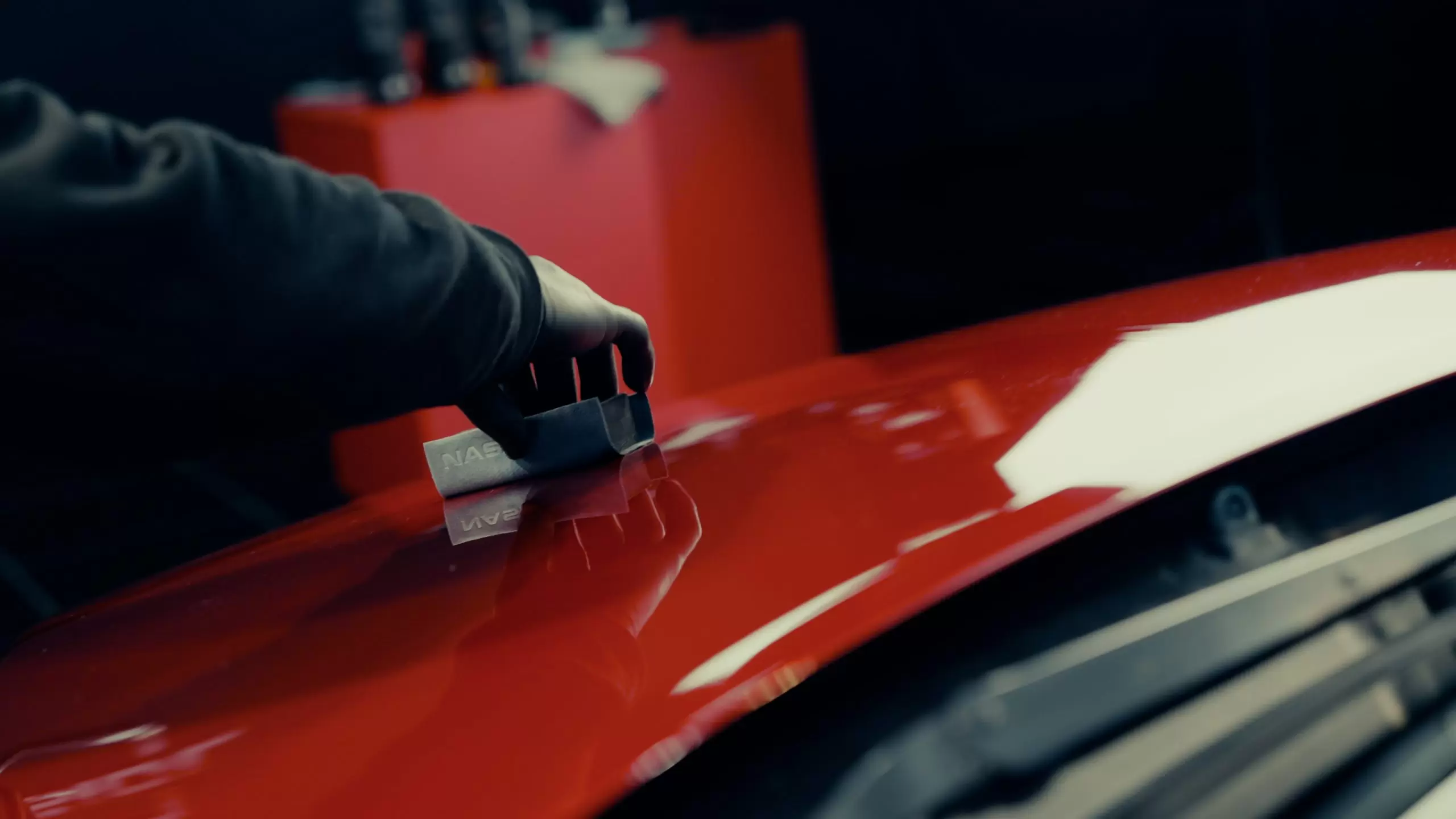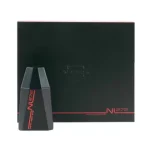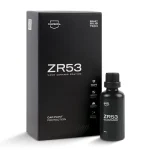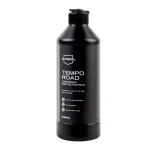Precious things are meant to be protected, and all the right measures need to be taken to guard your assets. If you own a car, you try your best to preserve its shine and efficiency, and that’s why many car and vehicle owners opt for nano-ceramic coating. People often consider ceramic coatings mere make-up for the aesthetic appeal of a vehicle, but their versatility and effectiveness lie in many hidden advantages. Here, we will help you explore the components of ceramic coatings, their popularity, and secret tips and benefits.
Components of Ceramic Coatings
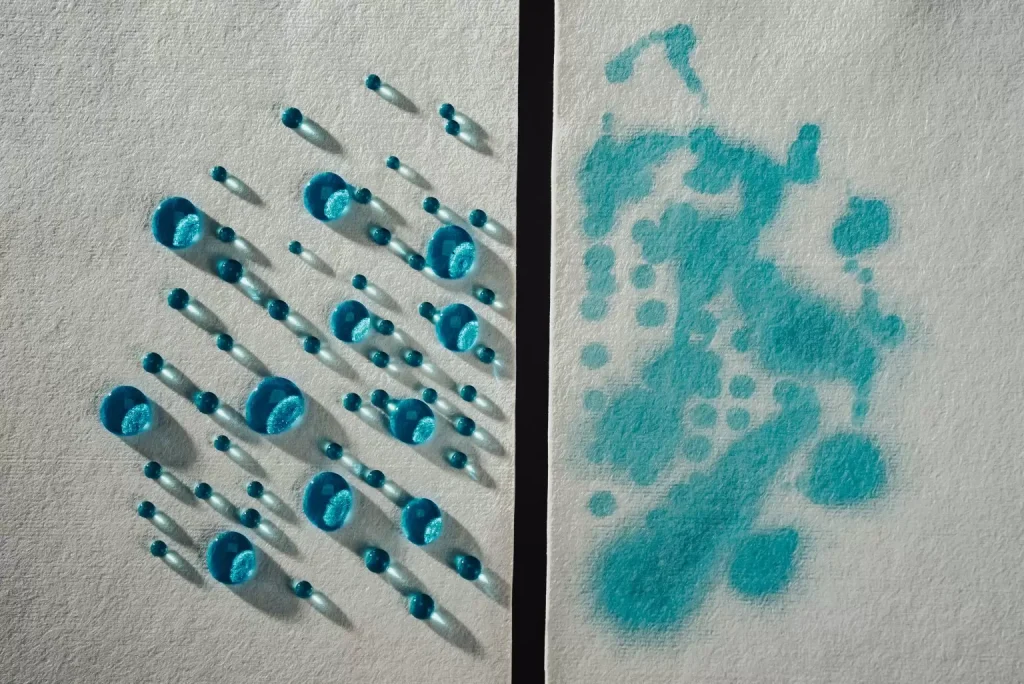
Car owners and drivers deeply desire a sleek, classy, and glossy look for their cars. To them, a luxury car is all about the neat and shiny exterior that dazzles the eyes at first sight. Certain elements in ceramic coatings make them an effective solution. Most ceramic coatings contain fundamental components such as silicone dioxide and titanium dioxide. These components play a crucial role in providing the ceramic coating’s durability, hydrophobic properties, and superior gloss.
- Silicone Dioxide (SiO2): Often referred to as silica, this key ingredient forms a hard, protective layer over the car’s paintwork. This layer is highly resistant to environmental contaminants such as dirt, grime, and pollutants, ensuring that the car’s exterior remains clean and vibrant for longer periods. Additionally, it enhances the paint’s depth and clarity, giving the vehicle a mirror-like finish that is highly coveted by car enthusiasts.
- Titanium Dioxide (TiO2): Known for its UV-blocking capabilities, titanium dioxide effectively protects the paint by reflecting and absorbing harmful ultraviolet rays. This protection prevents fading and oxidation over time, maintaining the car’s color and shine. Moreover, it contributes to the self-cleaning properties of the coating, where dirt and water slide off easily, reducing the frequency and effort needed for washing the car.
In addition to these primary components, ceramic coatings often include other proprietary additives that enhance their performance. These may improve the coating’s flexibility, ensuring it can withstand various stresses such as temperature fluctuations and minor impacts without cracking or peeling. Some advanced formulations also incorporate anti-static properties, which repel dust and debris, further keeping the car’s surface pristine.
Reasons for the Popularity of Ceramic Coating Amongst Car Owners
In the busy hustle and bustle of life, everyone wants intelligent solutions to their problems. Manufacturers of ceramic coatings use cutting-edge technology to craft products that make the car look appealing and improve efficiency. This is why car drivers and vehicle owners find ceramic coatings a reliable and trusted solution. Traditional wax and sealants don’t do the desired job, and that’s when ceramic coatings step in and perform wonders! Ceramic coatings tackle everything from swirl marks to chemical stains.
Ultimate Protection
One of the standout features of ceramic coatings is their ability to create an exceptionally durable protective layer on a car’s exterior, effectively shielding the vehicle’s original paint. This protective layer is formed through a chemical bonding process, where the ceramic coating, primarily composed of silicon dioxide (SiO2) and titanium dioxide (TiO2), adheres to the car’s paint at a molecular level. The SiO2 forms a silica-based network with strong covalent bonds, creating a hard, resilient layer. This layer, though thin, is incredibly robust and resistant to scratches and abrasions. Its chemical resistance also ensures protection against environmental contaminants such as acid rain, bird droppings, and industrial fallout, preserving the paint’s integrity.
Durability and Endurance
Ceramic coatings are renowned for their exceptional durability, making them a popular choice among car enthusiasts seeking long-lasting protection for their vehicles. Once applied, ceramic coatings form a strong, semi-permanent bond with the surface, creating a protective layer that can withstand the rigors of daily driving and exposure to environmental elements. This durable barrier shields the vehicle’s paintwork from a wide range of threats, including UV rays, acid rain, bird droppings, road salt, and other contaminants. Unlike traditional wax and polish, which can wear off relatively quickly, ceramic coatings provide long-lasting protection that can endure for years with proper maintenance.
Convenience of Maintenance
Ceramic coatings’ simplicity and easy application allow users to enjoy easy maintenance. After successfully applying ceramic coatings, car cleaning is significantly easier and simpler. Due to their hydrophobic qualities, washing away grime and mud is much easier. It makes the car look neat and shinier due to its excellent water-repellent qualities.
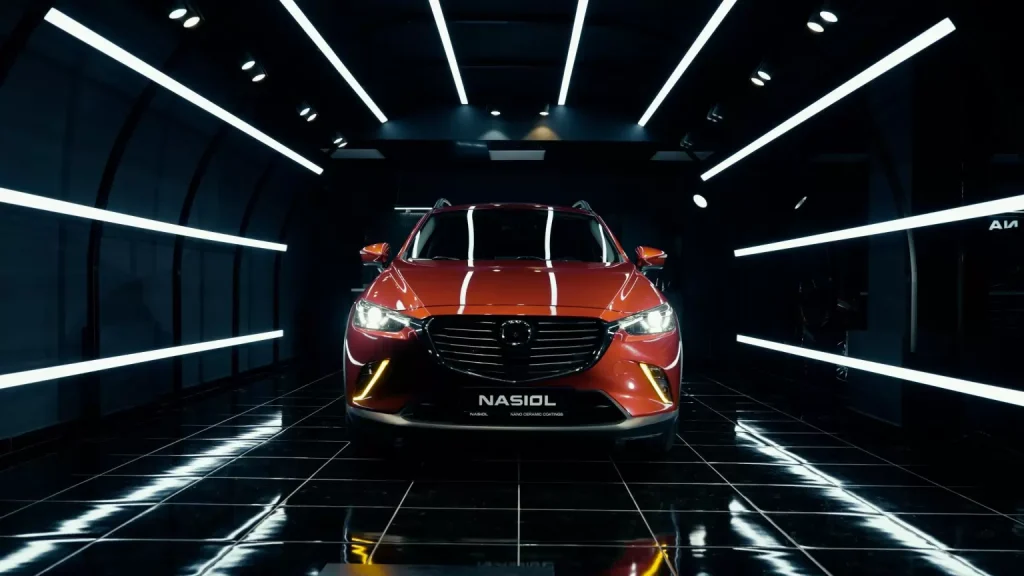
Unimaginable Glossy Look
The glossy, dazzling car surface is what every driver dreams of. Ceramic coatings often contain silicon dioxide (SiO2) nanoparticles. These nanoparticles create a robust and resilient coating by forming a molecular link with the paint molecules. The coating fills in the paint’s microscopic pores and flaws, resulting in a smoother, more reflective surface.
Heightened Resale Value
Ceramic coatings genuinely enhance the resale value of your valuable asset. A tidy ceramic-coated car preserves its original paint and guards its overall condition. Potential buyers are attracted to presentable and shinier cars, and ceramic coatings do the job perfectly.
A Budget-Friendly Solution
Some people wrongly consider it a costly and additional expense; however, offering long-term returns is cost-effective. The smoother surface provided by ceramic coating also improves fuel efficiency by reducing air resistance (drag) slightly, which could, in theory, enhance fuel economy.
A Shield Against UV Damaging Rays
UV rays can damage a car’s paint. In this connection, ceramic coatings promise robust protection against the sun’s rays. The inclusion of titanium dioxide (TiO2) in ceramic coatings plays a crucial role in UV protection. TiO2 particles have excellent UV-blocking capabilities, as they absorb and dissipate ultraviolet radiation, preventing it from penetrating and degrading the underlying paint. This protection ensures that coated cars maintain their color and gloss, reducing the risk of discoloration and preserving the vehicle’s aesthetic appeal.
Scratch-Proof Exterior
Ceramic coatings contain silicon dioxide (SiO2) nanoparticles, which, when cured, form a hard, crystalline structure on the vehicle’s surface. This hardness is often rated on the pencil hardness scale, with high-quality ceramic coatings achieving ratings of 10H, indicating significant resistance to surface scratches and marring.
Secret Tips for Ceramic Coating
Ceramic coatings work as immaculate armor against environmental toxins and other impurities, but to tickle your imagination, let us unveil some other hidden and lesser-known secret tips of ceramic coatings:
- Before applying ceramic coatings, cleaning your car thoroughly with clean water significantly helps the coating to adhere well.
- Pre-application of the coating to the entire surface and spot testing in a small, inconspicuous area is crucial to ensure compatibility and practice the application technique.
- Applying ceramic coating calmly, without rushing, can bring fruitful results. It is recommended that ceramic coatings be spread evenly across sections. Your patience and time will pay off!
- Proper buffing is essential, as it refines the surface to get a sleek finish. Using high-quality microfiber applicators and towels is also crucial as inferior tools can leave lint, scratches, or uneven application.
- Applying the coating in moderate temperatures and low humidity is recommended since extreme conditions can affect the curing process and the final result.
- After coating your car, wait two days before washing it. Let the coat sit well. This will allow the ceramic coat to bond well and stay longer. After two days, keep the look clean regularly; it makes the car look brighter and more radiant.
Benefits of Ceramic Coating
Ceramic coatings have several hidden benefits for cars. One of the best advantages is their incredible knack for preserving the signature showroom shine. Their water-repellent properties guard the exterior of your vehicle from dings and scratches. A ceramic-coated car makes cleaning less consuming. No wax and polish can bring a glossy finish; ceramic coatings dazzle the eyes and prevent the vehicle from discoloration and fading caused by UV rays. Stubborn stains on the car’s surface make the cleaning process difficult. Ceramic coatings make the removal of stubborn stains super-easy.
External factors like tree sap, bird droppings, and swirl marks are not a big deal when a car is ceramic coated. A ceramic coating isn’t just about a sleek, shiny look; it promises protection and undeniable perks.
Final Thoughts
Ceramic coatings effortlessly create a bond with the car’s exterior by forming a smooth and flawless layer at the molecular level. They offer durability, resilience, and protection. This liquid polymer chemically blends firmly with the car’s original paint, creating a strong shield that protects the vehicle against environmental hazards. The perks and advantages of ceramic coatings are numerous.
With these insights, you can see why ceramic coatings are a game-changer in vehicle maintenance, offering not just aesthetic appeal but long-term protection and value.
